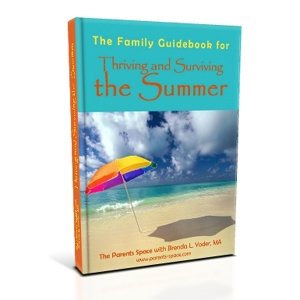I am an active husband and father and enjoy reading, writing, and gardening. I and my wife have three daughters that keep us busy and well entertained!
- |
- Web
- |
- More Posts (3)
Kids are truly amazing. Just when you think you have them figured out (more or less anyway) they go and do something that throws your wisdom out the window! I especially appreciate the gift of imagination and creativity children exhibit. My first two posts on this site dealt with these issues.
My last post was on the importance of reading and parents modeling that to their children. My youngest daughter, just this morning, was walking around with a book in her hand. Nothing unusual for her, though she is far too young to read, she still enjoys books and giving them to me or her mother to read to her. What was funny about this morning, however, was she had in her hands a theological dictionary! Hardly the usual reading for a young child!
But, the point remains . . . reading is important and getting your children to be comfortable with books is an important first step. Not only the calling out of words on a page; but, the whole experience of the endeavor. As parents we can model this to our children. My father is not the greatest reader of stories. He reads in a rather monotone voice and tries to read the story as quickly as possible. He is not comfortable reading aloud it would seem. In order to read well to our children, we must make it interesting. In short, we should make the story come alive to them.
Now, I know some are far better at this than others, I’m not saying you have to be a professional actor or actress; but, some performance does enhance the experience. Such things as inflection and facial expressions for different characters in the story can enhance the story for your children. Or, maybe acting out a particular scene or the use of your hands to illustrate an action. These are all cues your child can pick up and use to their advantage as they begin reading for themselves.
It is important to instill these habits in them at an early age. I was thumbing through a parenting book earlier today. In it the author made the case for praising your child when he/she does something well. The idea is that children who grow up in an affirming, praising home are more likely to have less self-image problems when they grow older. They are more likely to be confident and have goals and a purpose for their lives.
The same is true for reading. Children who see good reading modeled for them are more likely to grow up to be good readers. What is a good reader you may ask? A good reader is one who can get the needed information from a passage. It is one who can ascertain the main idea of a paragraph or chapter. It is one who can see sequencing and understand the use of allegory. A good reader is one who knows the value of plot and character development. A good reader, in short, is one who does not simply call out words from a page; but, one who internalizes the writing, understanding it and formulating their own thoughts and opinions of it.
Some children are able to do this almost naturally; but, all children benefit from the modeling of their parents. The skill of being a good reader will enhance a child’s ability for free and forward thinking. It will help them to be independent thinkers. They will sharpen their acumen and learning abilities. They will be more likely to do well in academia and handle themselves well in different situations. There is an inner confidence that is nurtured through the practice of good reading skills.
Not only that, but it helps your child to build upon their instinctive imagination and creativity. A good reader is one who sees what he/she reads. A story is not simply black words on a white page. A story is an event, it is play that is acted out in their imagination. Again, nurturing the ability to imagine what they are reading is an important step in a child’s development as a reader.
If a child reads a simple statement like, The blue bird flew over the green bush, and they don’t visualize what they have read, they are less likely to retain it, and even more, to understand it. This is where modeling good reading pays extra benefits. It helps the child to see what is being said. It enables them to go behind the words, so to speak, or perhaps more aptly, to transcend the words to the ideas and truths that are being presented. It helps them to engage the writer and form their own ideas, whether they agree or disagree.
Being able to paint the picture mentally is an advantage over others who merely call out the words. It heightens retention of the material and gives the good reader insight that is not afforded to others. The old G.I. Joe slogan was, Knowing is half the battle. Well, here knowing (by good reading and mental imaging) is half the battle to handling written material well.
There are many advantages to nurturing your child to be a good reader. I have only named a few here in this post. One good exercise to do with your child is to ask them what they see for a particular sentence or image. Again, if you are reading about a blue bird ask them to tell you what they are seeing in their mind’s eye. Also, finish the story and ask them to tell it back to you in their own words and then ask them some probing questions about the passage. All of this will enhance their reading and thinking skills.
Tiny URL for this post:











